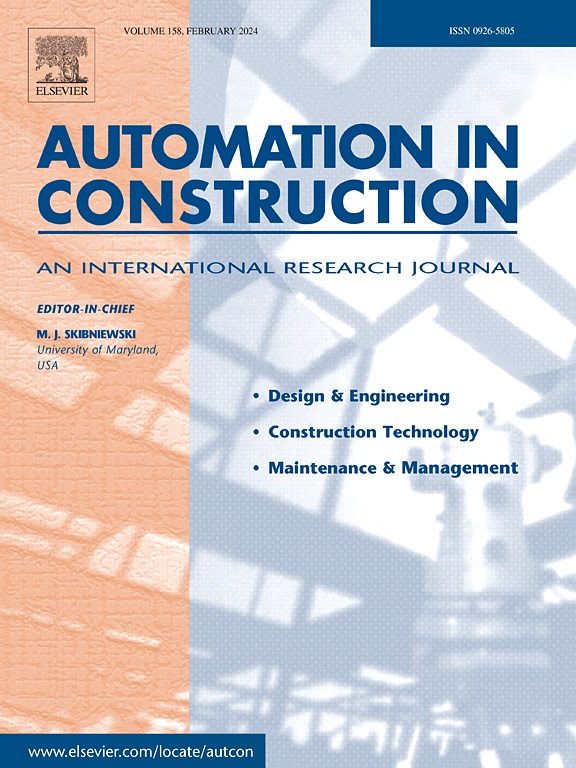Multi-source data-driven intelligent analysis and decision optimization for high-density pedestrian flows in urban public spaces
IF 11.5
1区 工程技术
Q1 CONSTRUCTION & BUILDING TECHNOLOGY
引用次数: 0
Abstract
Managing high-density pedestrian flows in urban public spaces via Information Technologies (IT) is crucial for safety and efficiency. Despite advancements in sensing, AI-driven prediction, and control, a critical gap persists: lacking the systematic integration needed for robust automated crowd management systems, an issue intensified by AI/IoT growth. To address this challenge, a comprehensive review of the literature from 2014 to 2024 has been conducted, analyzing and synthesizing IT-driven decision support approaches for automated crowd management. The field is organized around three core technological pillars: (1) multi-source data fusion architectures for comprehensive real-time monitoring; (2) intelligent prediction systems using deep learning for accurate forecasting and anomaly detection; and (3) advanced decision optimization platforms enabling dynamic, multi-objective control strategies. In addition, the review explores key emerging trends such as edge computing, digital twins, and human-machine collaboration. The findings offer theoretical insights, practical guidelines, an overview of persistent challenges, and strategic directions for future research in intelligent crowd management within the broader context of smart cities and resilient infrastructure.

城市公共空间高密度人流的多源数据驱动智能分析与决策优化
通过信息技术(IT)管理城市公共空间高密度的行人流量对于安全和效率至关重要。尽管在传感、人工智能驱动的预测和控制方面取得了进步,但一个关键的差距仍然存在:缺乏强大的自动化人群管理系统所需的系统集成,这一问题因人工智能/物联网的增长而加剧。为了应对这一挑战,对2014年至2024年的文献进行了全面回顾,分析和综合了自动化人群管理的it驱动决策支持方法。该领域围绕三个核心技术支柱进行组织:(1)用于全面实时监控的多源数据融合架构;(2)利用深度学习进行准确预测和异常检测的智能预测系统;(3)支持动态、多目标控制策略的高级决策优化平台。此外,该报告还探讨了边缘计算、数字孪生和人机协作等关键新兴趋势。研究结果提供了理论见解、实践指南、持续挑战的概述,以及在智慧城市和弹性基础设施的更广泛背景下,未来智能人群管理研究的战略方向。
本文章由计算机程序翻译,如有差异,请以英文原文为准。
求助全文
约1分钟内获得全文
求助全文
来源期刊

Automation in Construction
工程技术-工程:土木
CiteScore
19.20
自引率
16.50%
发文量
563
审稿时长
8.5 months
期刊介绍:
Automation in Construction is an international journal that focuses on publishing original research papers related to the use of Information Technologies in various aspects of the construction industry. The journal covers topics such as design, engineering, construction technologies, and the maintenance and management of constructed facilities.
The scope of Automation in Construction is extensive and covers all stages of the construction life cycle. This includes initial planning and design, construction of the facility, operation and maintenance, as well as the eventual dismantling and recycling of buildings and engineering structures.
 求助内容:
求助内容: 应助结果提醒方式:
应助结果提醒方式:


